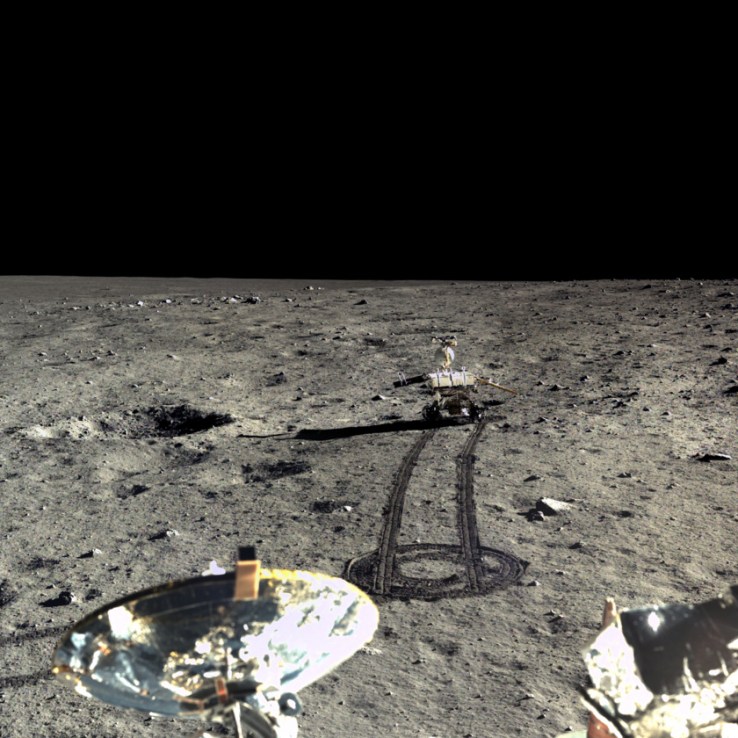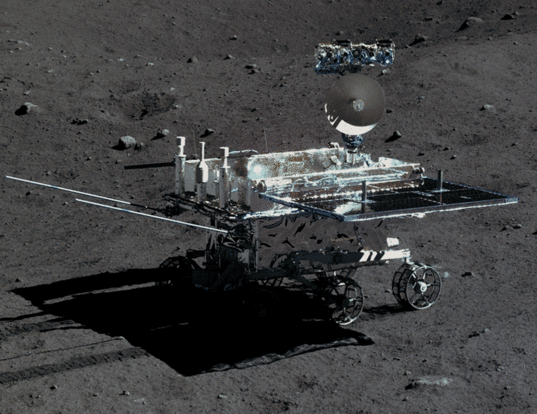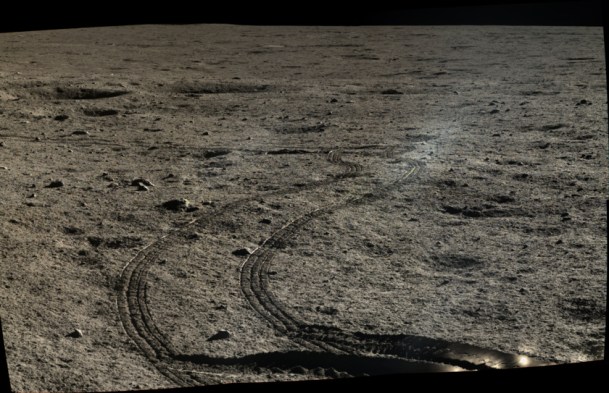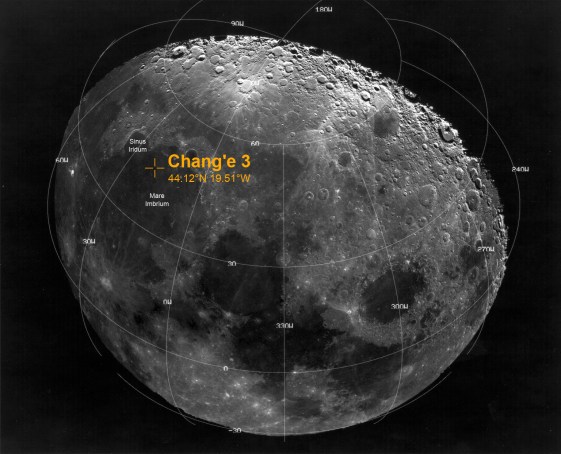
This month, the China National Space Administration released all of the images from their recent moon landing to the public. There are now hundreds and hundreds of never-before-seen true color, high definition photos of the lunar surface available for download.

Yutu
Rover / Image Courtesy of Chinese Academy of Sciences / China National
Space Administration / The Science and Application Center for Moon and
Deepspace Exploration / Emily Lakdawalla
What made China’s mission especially remarkable was that it was the first soft-landing on the moon in 37 years, since the Russians landed their Luna 24 probe back in 1976.
Today, anyone can create a user account on China’s Science and Application Center for Moon and Deepspace Exploration website to download the pictures themselves. The process is a bit cumbersome and the connection to the website is spotty if you’re accessing it outside of China.
Luckily, Emily Lakdawalla from the Planetary Society spent the last week navigating the Chinese database and is currently hosting a suite of China’s lunar images on the Planetary Society Website.

Yutu
rover tracks / Image courtesy of Chinese Academy of Sciences / China
National Space Administration / The Science and Application Center for
Moon and Deepspace Exploration / Emily Lakdawalla

Lunar
surface / Image courtesy of Chinese Academy of Sciences / China
National Space Administration / The Science and Application Center for
Moon and Deepspace Exploration / Emily Lakdawalla

Chang’e 3 lunar landing location / Image courtesy of NASA

NASA
Lunar Reconnaissance Orbiter image of the Chang’e Lander (large white
dot) and Yutu Rover (smaller white dot) / Image courtesy of NASA, GSFC,
and Arizona State University
Today, the Yutu lander, which provided the mission capability of sending and receiving Earth transmissions, is no longer operational.
China’s follow-up mission, Chang’e 4 is scheduled to launch as early as 2018 and plans to land on the far side of the moon. If this happens, China will become the first nation to land a probe on the lunar far side.
With the Chang’e series, China has shown that, unlike NASA, their focus is on lunar, rather than Martian, exploration. But they’re not the only ones that have their sights set on the moon. Through the Google Lunar Xprize, a number of private companies are building spacecraft designed to soft-land on the lunar surface in the next few years.
One of those companies, Moon Express, plans to be the first ever private company to land a spacecraft on the moon and has already secured a launch for their spacecraft in 2017.
It’s been nearly 40 years since anyone soft-landed a spacecraft on the moon. This next decade, however, is set to see a wave of lunar exploration like we’ve never experienced. With the China National Space Administration focusing their resources on lunar probes, and private companies planning to profit off of lunar resources, the moon is about to become a much busier destination.




0 comments:
Post a Comment
What's On Your Mind?